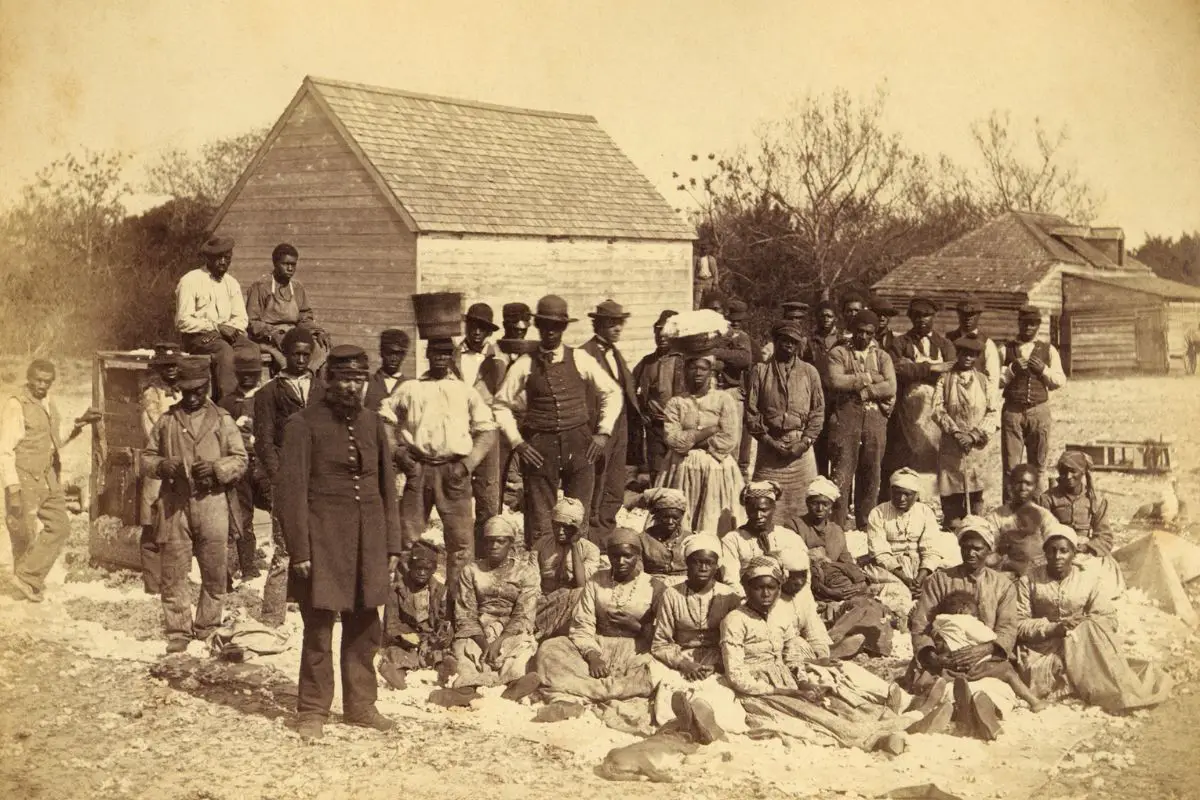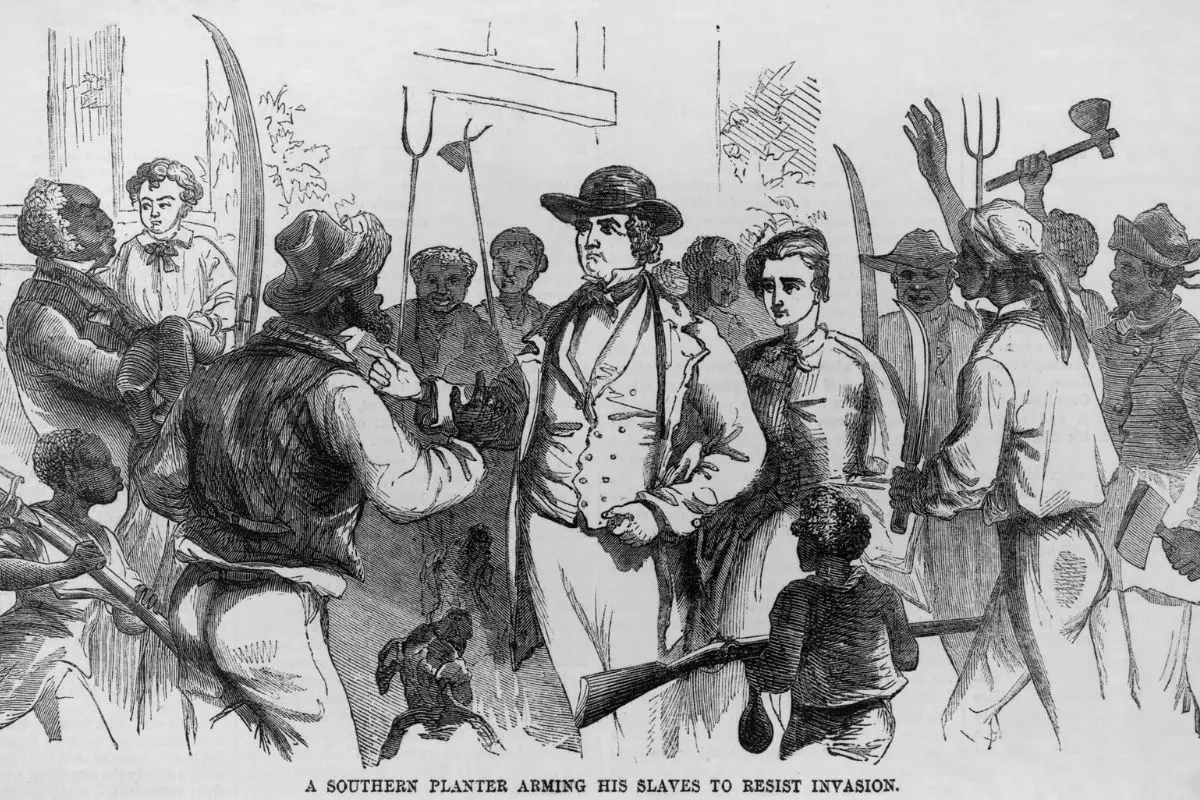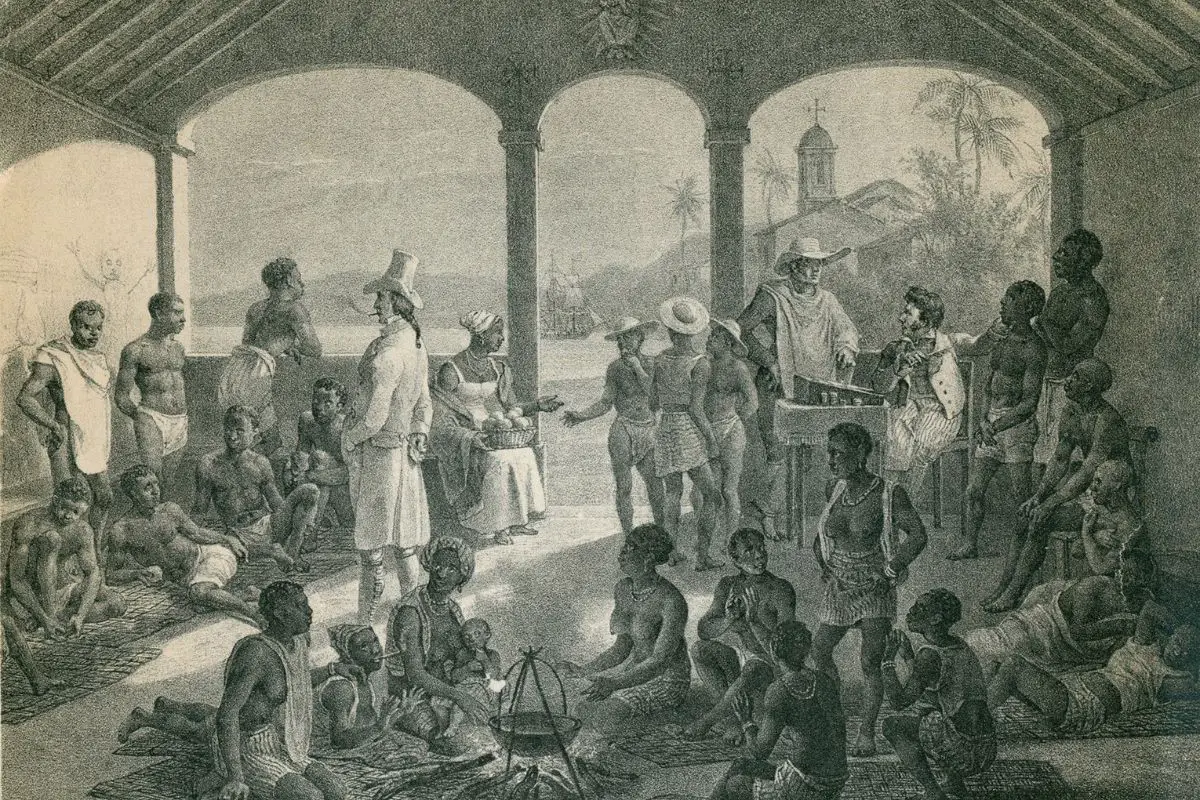In this article, readers will learn about the historical connection between the coffee industry and slave labor. The article covers the origins of coffee in Ethiopia, its spread to the Arab world, and the introduction of African slave labor in coffee plantations. It further delves into the role of European powers in the slave trade and coffee production, the economic impacts of slavery on coffee plantations, and the living conditions and treatment of enslaved workers. The article also discusses the abolition movements, the transition to other forms of labor in coffee production, and the long-term effects of slave labor on the industry. Finally, it addresses modern ethical issues in coffee production, initiatives promoting ethical trade, and ways to commemorate and honor the history of enslaved coffee plantation workers.

The Origins of Coffee and Slave Labor
The discovery of coffee in Ethiopia
Coffee is believed to have been discovered in the Kaffa region of Ethiopia sometime between the 9th and 13th centuries, although the exact timeline remains uncertain. According to legend, a young shepherd named Kaldi noticed that his goats became unusually lively after consuming the berries from the coffee plant. Intrigued, Kaldi tried the berries himself and experienced their stimulating effects.
Word of the stimulating berries spread, and the plant was cultivated for its beans, which were used both as food and as a medicinal substance. The beans were eaten raw, either whole or crushed, and sometimes mixed with fat for additional energy. The leaves were also consumed, brewed into a tea-like drink for their stimulating effects.
The spread of coffee cultivation to the Arab world
It was not until the 15th century that coffee beans reached the Arab world, where they were first roasted and brewed to create the beverage known today as coffee. Once introduced to the Arab world, coffee cultivation and consumption spread rapidly throughout the region, particularly in Yemen.
Sufi mystics were particularly fond of the beverage, as it allowed them to stay awake for extended periods of time during their nighttime devotionals. By the 16th century, coffee had become a staple of social gatherings, known as “coffee houses,” across the Ottoman Empire, playing an integral part in the social and cultural fabric of the region.
Introduction of African slave labor in coffee plantations
As coffee cultivation expanded in the Arab world, particularly in present-day Yemen, labor was needed to tend to the plantations. It was from here that the use of African slave labor was introduced, and slaves were forcefully transported from Africa to tend to the rapidly expanding coffee plantations.
The systematic use of enslaved Africans to produce coffee led to widespread abuse, cruel treatment, and inhumane working conditions. The practice continued to spread as European traders began to venture into coffee production and introduced the crop to new regions in the Americas.
Slave Trade and Coffee Plantations
Slave trade routes and coffee producing regions
The transatlantic slave trade, which took place from the 16th to the late 19th century, saw the forced transport of millions of Africans across the Atlantic Ocean to the Americas to work as laborers in several industries, including coffee plantations. The European colonies in the Americas had vast plantations where coffee was grown, primarily in the Caribbean and South America, and they were heavily reliant on the labor of enslaved Africans.
Slave labor became the primary source of workforce in these regions, tied to the coffee production. As coffee’s popularity and demand continued to grow, so too did the need for enslaved labor to meet that demand. The new territories that European powers colonized and acquired in Central and South America facilitated the spread of coffee plantations and the trade of enslaved humans to maintain them.
The role of European powers in the slave trade and coffee production
European powers, particularly Portugal, France, and Britain, played a major role in the transatlantic slave trade, taking advantage of the demand for plantation labor created by the growing coffee industry. As they colonized and established control over new territories, they also introduced coffee cultivation and plantation management practices that relied on enslaved labor to maintain their growing investments.
Enslaved Africans were subjected to brutal conditions on the plantations, with many dying from overwork, malnutrition, and mistreatment. Those that survived endured harsh lives with little to no basic human rights. European powers played a direct role in the perpetuation of these inhumane practices, driven by their desire for profit and global market expansion.
The economic impact of the slave trade on coffee plantations
The economic impact of the slave trade on coffee plantations was significant. By using enslaved labor, plantation owners could cut labor costs and expand their coffee-growing operations, making the production of the crop more profitable for them.
The reliance on slave labor allowed coffee plantations to produce in large quantities, bringing down the price of the commodity while increasing demand for coffee. This effectively laid the foundation of the thriving coffee industry as we know it today.
In conclusion, the history of coffee is inextricably linked with the history of the slave trade. From its origins in Ethiopia to its spread across the Arab world and the Americas, the cultivation and production of coffee have always involved the suffering of countless enslaved Africans. The legacy of this period in history can still be felt today, with the coffee industry remaining one of the key economic drivers for many countries, making it essential for modern consumers to acknowledge and understand the human cost tied to their daily cup of coffee.
Slave Labor on Coffee Plantations
Living conditions and treatment of enslaved workers
Enslaved workers on coffee plantations faced cruel and inhumane living conditions. They were frequently separated from their families and forced to live in overcrowded and unsanitary accommodations. The living quarters often consisted of poorly built shacks, barely providing any protection against the elements. A lack of proper nutrition and clean drinking water further contributed to the workers’ misery, leading to constant illness and malnutrition.
The enslaved laborers endured punishing work hours, as they were required to work from dawn till dusk with little to no breaks. The workload involved heavy physical labor, carrying bags of coffee beans, and enduring the tropical climate. In addition to the grueling work conditions, overseers often punished the enslaved workers to maintain control and discipline among the workforce. The punishments ranged from whippings, beatings, and branding to more severe actions like amputations or even executions as a means to set an example for others.
The role of enslaved workers in coffee plantation operations
Enslaved workers played a critical role in the success and prosperity of coffee plantations across the world. They were responsible for both the planting and nurturing of coffee plants, as well as the harvesting and processing of the coffee beans. Tasks involved in the care for the coffee plants included watering, pruning, weeding, and fertilizing the soil.
When it came to harvesting the coffee beans, the enslaved workers were tasked to pick the ripe cherries by hand, a labor-intensive process that required attention, as unripe beans would negatively affect the flavor and quality of the final product. The workers were then responsible for processing the harvested coffee cherries, which consisted of removing the skin, pulp, and mucilage surrounding the coffee beans, followed by washing, fermenting, drying, and finally sorting them for quality control.
Resistance and rebellion among enslaved coffee plantation workers
Despite their plight, enslaved workers on coffee plantations often resisted and rebelled against their oppressors. This resistance took many forms, such as acts of sabotage, willful negligence, and theft of coffee beans. Some enslaved individuals also escaped from the plantations and formed communities in remote locations known as Maroon settlements.
Rebellions were also a common form of resistance. Although these uprisings were often brutally suppressed, they served as a testament to the enslaved workers’ determination for freedom and equality. One notable example is the Baptist War, a rebellion in Jamaica in 1831 led by enslaved workers demanding better treatment and wages. Despite the brutal suppression of this rebellion, it was a precursor to the full abolition of slavery in British colonies through the Slavery Abolition Act of 1833.
Abolition Movements and Impact on Coffee Plantations

The role of abolition movements in ending slave labor in coffee production
As the global consciousness started to shift against slavery, abolition movements played a significant role in ending slave labor in coffee production. The Quakers, a religious group renowned for their fierce opposition to slavery, were among the key players in the fight against slave labor in the coffee industry. By purchasing and promoting “Free Produce” goods, they encouraged consumers to boycott products sourced through slave labor, including coffee.
In the United States, the American Anti-Slavery Society tirelessly worked to push for the abolition of slavery. Abolitionists such as William Lloyd Garrison, Frederick Douglass, and Harriet Tubman, among others, raised awareness about the plight of enslaved workers, gathering public support for their cause. These collective efforts ultimately led to the emancipation of enslaved individuals in coffee-producing countries globally.
Transition from slave labor to other forms of workforce on coffee plantations
Following the enactment of abolitionist laws in different countries, coffee plantations were forced to find alternative forms of labor for their operations. Waged labor became the new norm, with former slaves and immigrants from different countries employed as workers. In Brazil, following the abolition of slavery in 1888, coffee plantation owners imported workers from Italy, Japan, and other countries to meet their labor demands.
However, it is important to note that while slavery was legally abolished, the conditions endured by these newly hired workers in some regions were not much better. Wage rates were low, and workers were often trapped in debt contracts that effectively resembled bonded labor. In some cases, laborers lived in similar squalor compared to their enslaved predecessors.
The long-term effects of slave labor on the coffee industry
The legacy of slave labor in the coffee industry continues to be felt today. The scale and efficiency enabled by forced labor facilitated the rapid expansion of coffee production worldwide, making it one of the most widely consumed beverages today. Additionally, the exploitative practices utilized within coffee production during that era have left deep scars in the affected regions, with intergenerational inequality and economic instability persisting.
Moreover, the focus on profit maximization, often at the cost of human rights and environmental integrity, remains a contentious issue within the coffee industry. Fair wages, living and working conditions continue to be a cause for concern in many producing nations, where workers still face exploitation and precarious working conditions.
Legacy of Slave Labor in the Coffee Industry
Modern ethical issues in coffee production and sourcing
Despite the centuries that have passed, the remnants of the coffee industry’s dark history still persist. Today, ethical issues like low wages, child labor, forced labor, and hazardous working conditions plague coffee plantation workers in various countries. Additionally, deforestation and environmental degradation caused by coffee cultivation affect surrounding communities and wildlife habitats.
Initiatives and certifications promoting ethical coffee trade
As awareness increases surrounding the ethical concerns within the coffee industry, several initiatives and certifications have arisen to promote ethical practices. These certifications, such as Fair Trade, Rainforest Alliance, and UTZ, seek to ensure that coffee growers receive fair prices for their product, while environmental standards are maintained throughout the supply chain. By purchasing certified coffee, consumers can support more equitable, sustainable practices in the coffee industry.
Commemorating and honoring the history of enslaved coffee plantation workers

Acknowledging and paying tribute to the history of enslaved coffee plantation workers is imperative to understand the roots of modern-day issues and continue the fight for improved labor rights within the industry. Advocacy groups, educators, and historians must work together to raise awareness about this historical legacy, propound the lessons learned, and focus on achieving a more just and equitable future for those who toil in the coffee trade today. Efforts such as erecting monuments, dedicating museums, and including these histories in educational curricula are important steps in preserving and honoring the memory of those who suffered due to the coffee industry’s dark past.
FAQs on The Use of Slave Labor on Early Coffee Plantations
How were enslaved laborers incorporated into the early coffee plantation system?
Enslaved laborers were forcibly transported from Africa to the coffee-producing regions in the Americas, where planters exploited their labor for coffee cultivation. These workers were subjected to brutal conditions, including long work hours, harsh punishments, and inhumane living conditions (Stiles, 2000).
Why was slave labor predominantly used on early coffee plantations?
Slave labor was used on early coffee plantations due to the labor-intensive nature of coffee cultivation and the availability of cheap enslaved workers from Africa. The system proved profitable for European plantation owners, as it allowed them to maximize production and meet increasing global demand for coffee (Higman, 2000).
What was the living situation of enslaved people on coffee plantations?
Enslaved people on coffee plantations had extremely difficult living conditions. They were often subjected to overcrowded, unsanitary housing with limited access to food and basic necessities. The harsh work demands often led to high mortality rates, illnesses, and injuries among the enslaved population (Berlin, 1996).
Which countries were primarily involved in operating slave-labor-based coffee plantations?
The major countries operating slave-labor-based coffee plantations included Brazil, Cuba, and parts of the Caribbean during the 18th and 19th centuries. Additionally, European colonial powers, such as Portugal, Britain, and France, played a significant role in the slave trade and profited from coffee plantations in their respective colonies (Higman, 2000).
How did the abolition of slavery impact coffee plantations and their workforce?
The abolition of slavery forced plantation owners to adapt their workforce by replacing slaves with wage laborers, often through indentured servitude or contract labor systems. This transition was marked by significant social and economic changes within the coffee industry, and many former slaves sought to escape the plantation system altogether (Weinhaus, 2005).
What are the lasting effects of slave labor on coffee cultivation and producing countries?
The legacy of slave labor in coffee cultivation is reflected in the ongoing racial and social inequalities in producing countries, particularly Brazil. Economic disparities, land ownership issues, and discrimination against Afro-Brazilian communities can be linked to the historical exploitation of enslaved workers on coffee plantations (Alden, 2002).